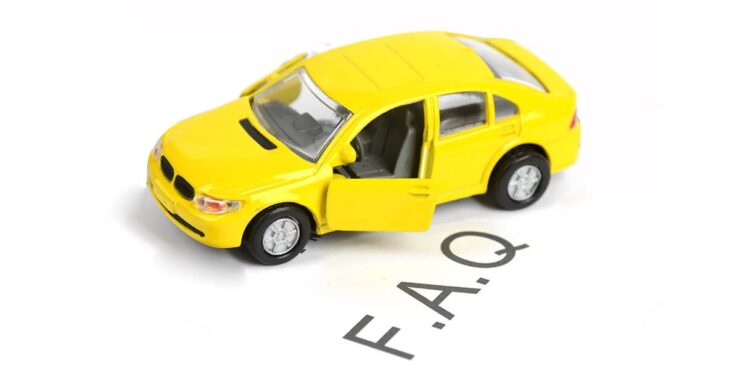It has been a decade since the launch of hybrid vehicles, but still, the sales of diesel and petrol power vehicles are booming. The engine is an essential part of a vehicle, so it must be maintained properly to extend its lifetime. As most of the parts in the engine are movable, it has to be lubricated with appropriate engine oil to avoid malfunction.
But sometimes engine oil might burn due to overheating and over usage, so people should make sure to drain out the old engine oil and refill new oil to provide sufficient lubrication to the engine.
Sometimes the oil might burn inside or outside the engine, so people should make sure to monitor the engine at regular intervals. This cap and oil seal might be damaged, and because of this reason, the oil might spill outside the engine.
But some car users might wonder why is my car burning oil? So we have mentioned some essential points on why the engine oil is burnt, so stay connected with this article till the end.
How To Identify The Burning Engine Oil?

One of the simplest ways to identify the burning engine oil is by looking at the indicators that are available in the dashboard. If the engine oil level is low, then the indicators in the dashboard may blink. So by looking at this, people can easily change the engine oil to avoid malfunction or a decrease in mileage of Toyota cars. Some old cars might not show the indication in the dashboard, so people should utilize the dipstick in engine oil to check for essential criteria.
So soon after removing the dipstick, it is a must to check for the color of the engine oil. If the color is too dark, then it is said that the engine oil is burnt. Usually, a new engine oil looks dark brown, but the color might change into dark black if the oil is burnt.
If the engine oil is not changed even after that, there are possibilities for malfunctioning and a decrease in mileage. Other than these indications, the smell of the engine will be different if the engine oil is burnt. So this kind of indication might occur if the engine oil leaks into the external hot surface of the engine.
Sometimes the vehicle’s smoke will be blue if the oil is burnt inside the engine. This might happen when the car is started and accelerated. Equipping a warning light for engine oil pressure might also be helpful for long-distance riders; if the engine oil is decreased, then eventually, the signs in the pressure valve start blinking.
What Results In Engine Oil Burn?

Burning oil is one of the common defects that many car owners face in today’s situation. Cars engine oil might burn for several reasons, but excessive engine heat is one of the most critical factors. Yes! Of Course, engine oil is responsible for reducing the engine heat. Still, a badly maintained engine and missing the service due date might result in engine heat and oil burns.
Types Of Engine Oil Burns
-
Internal Burning
Usually, this type of engine oil burn might happen inside the engine in which the oil might pass on to other parts of the engine, which means the oil will overflow because of excessive heat. Sometimes the valve seals and piston rings might be worn out, which may lead to the overflow of engine oil to the combustion chamber.
Technically the combustion chamber obtains a spark while starting the vehicle. So the fuel and the mixture of air inside the combustion chamber will create a spark that helps start the vehicle with ease.
If the parts in an engine lose their strength to withstand engine oil inside its chamber, the oil might leak inside the combustion chamber, creating a burning smell.
The excessive waste air might be pushed out of the exhaust from which the burning oil can be identified. A vehicle with excellent maintenance might emit gray-colored gas, whereas a vehicle with very bad maintenance might emit dark black or even blue gas.
-
External Burning

In internal burning, the valves inside the engine might be damaged so the engine oil might leak inside the engine. In external burning, the oil seal available outside the engine might wear out, which eventually results in leakage or spill out of engine oil outside the engine. This will create a burning smell outside the engine. The oil spillage might also result in insufficient engine oil inside the machine. People should check for these signs if they prefer to maintain the car in perfect condition.
Any oil burn can be avoided by servicing the cars at regular intervals. So by servicing the car at regular intervals, people can easily identify the worn-out parts in the car and change them periodically.
Final Words
Hence some of the causes, identification methods, and types of engine oil burns have been discussed. Now people might find it easy to check for essential criteria and maintain the car in a better way to have a better riding experience. People should make sure to service their cars in authorized service centers to change the essential parts regularly. Hope this article is informative!
Frequently Asked Questions

What are the effects of engine oil burn?
Burnt engine oil might decrease mileage and malfunction if the car is used without changing the engine oil. So whenever you find a different colored smoke in the exhaust, it is a must to change the engine oil. It is also better to check for essential criteria by checking the vehicle thoroughly.
How much oil will be burnt normally?
In general, some amount of engine oil will be burnt in a good engine. But sometimes, the engine oil will be burnt completely, and the engine oil tank might remain empty. So this kind of sign needs some attention and the engine oil must be replaced immediately. Make sure to choose the preferred service center to change the engine oil with ease.
What is engine oil burn?
Engine oil burn refers to the consumption or depletion of engine oil due to various factors such as overheating, poor maintenance, worn-out parts, or damaged oil seals. It can occur internally inside the engine or externally outside the engine.
What are the symptoms of engine oil burn?
The symptoms of engine oil burn may include low engine oil level, dark black or brown engine oil color, burning smell inside or outside the engine, blue smoke in the exhaust, and decreased mileage or performance of the vehicle.
What are the causes of engine oil burn?
The causes of engine oil burn may include excessive engine heat, poor maintenance, missed service dates, worn-out parts such as valve seals and piston rings, damaged oil seals, and leakage or spillage of engine oil inside or outside the engine.
How can engine oil burn be prevented?
Engine oil burn can be prevented by following regular maintenance schedules, changing engine oil at recommended intervals, checking the engine oil level and color periodically, inspecting and replacing worn-out parts, and fixing any oil leaks or spills outside the engine.
What are the consequences of ignoring engine oil burn?
Ignoring engine oil burn can lead to decreased mileage, decreased performance, engine malfunction, and even engine failure. It can also cause permanent damage to engine parts such as the cylinder walls, pistons, and bearings.
How often should engine oil be changed?
The frequency of engine oil change depends on various factors such as the make and model of the vehicle, the type of driving conditions, and the type of engine oil used. It is generally recommended to change engine oil every 5,000 to 7,500 miles or every six months, whichever comes first. However, it is best to follow the manufacturer’s recommendations for optimal engine performance and longevity.













